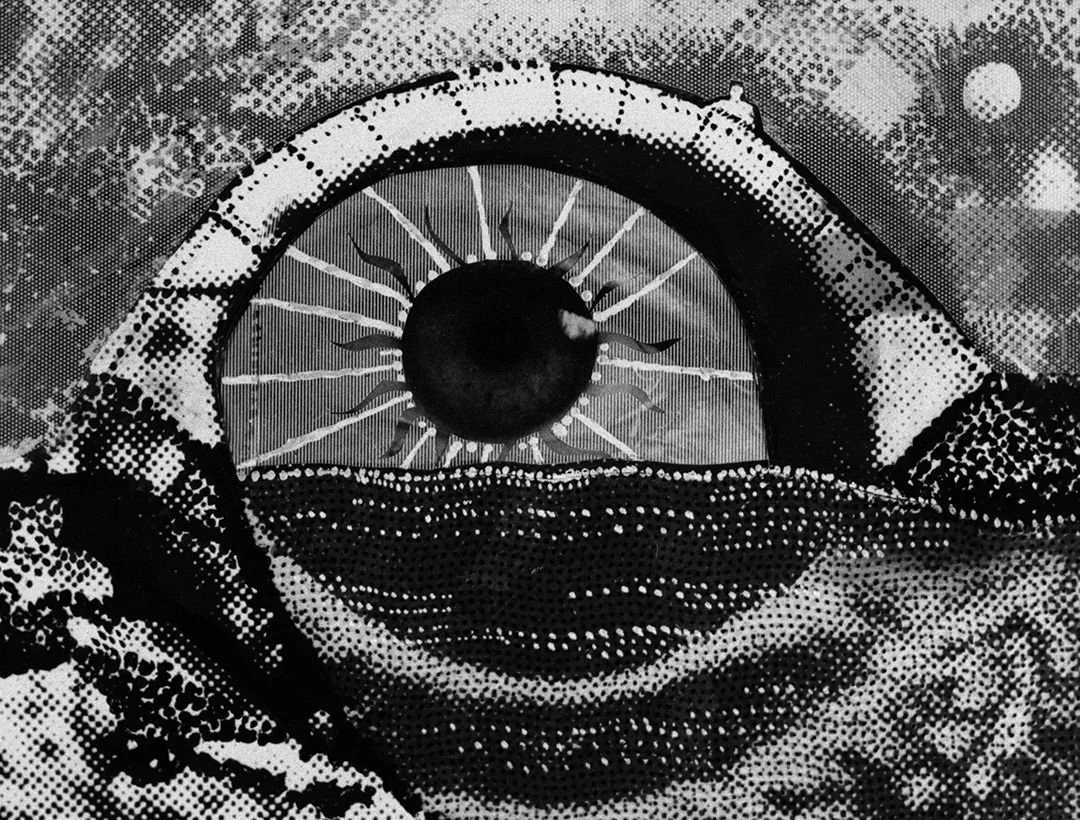Schema: World as Diagram
Thomas Hirschhorn, Schema Art and Public Space, 2016-22, cardboard, paper, prints, ballpoint pen, felt, pen, plastic film, and tape, 47 1/4 x 78 3/4 in., 120 x 200 cm
© Thomas Hirschhorn
Courtesy of the artist and Gladstone Gallery
Photo by Marc Domage
Written by Amanda Smith
Through decoding the interplay of symbolism, abstraction and figuration, "Schema: World as Diagram" challenges conventional artistic boundaries and invites viewers into a realm of visual synthesis and exploration. This exhibition echoes aspects of the Dada movement, infusing it with a contemporary twist to redefine artistic boundaries and challenge preconceived notions of artistic expression.
Paul Laffoley, Geochronmechane: The Time Machine from the Earth, 1990, serigraph in colored inks, with corrections by the artist in colored pencils, Coventry acid-free rag, 32 x 32 in., 81.3 x 81.3 cm
When the Dada art movement emerged in the early 20th century it was a response to the chaos of World War I. The art movement aimed to reject established aesthetic values and societal norms. Artists associated with Dada questioned the purpose of art in a world filled with violence and upheaval. "Schema: World as Diagram" embraces this ethos of rebellion and determination to redefine art and its purpose in the present day.
A major context underlying the collection is that artists embraced a technique adopted by artists such as Marcel Duchamp, Francis Picabia, and Hilma af Klint. These radical artists pioneered the use of diagrams in conceptual art, abstract expressions, and spiritual investigations. By incorporating diagrams, the artists in "Schema" bridge the gap between structured visual information and the dichotomy of abstraction and figuration, echoing the revolutionary use of visual meaning employed by the Dadaists.
Joanne Greenbaum, Untitled, 2000-01, oil on canvas, 90 x 80 in., 228.6 x 203.2 cm
© Joanne Greenbaum
Courtesy of the artist and Mitchell Innes & Nash, New York
Photo by Olympia Shannon
The exhibition displays a spectrum of creative expressions beyond that of painting, this in practice is reminiscent of the modern art movement, constantly both evolving and emerging during the 1900s. Renee Gladman, a poet, and Wadada Leo Smith, a composer, both contribute their investigations of diagrammatic drawing in experimental music and poetry, demonstrating the multidisciplinary nature of this artistic method. In addition to providing insight into the rich history of diagrammatic art, the exhibition offers an opportunity to see the remarkable systematic experiments conducted by Jennifer Bartlett, Joseph Beuys, and Charles Gaines during the 1970s.
Loren Munk, The Ontology of Art, Study I, 2016, oil on linen, 24 x 48 in., 61 x 121.9 cm
Artworks such as a dot painting by Jimmy and Angie Tchooga, anonymous tantric paintings, a 19th-century Jain Cosmological Diagram, and a Central Asian rug from nomadic cultures exemplify the universality and versatility of the medium. The exhibition pushes the boundaries further with mesmerizing neon sculptures by Tavares Strachan and expansive photo montage-style collages by Thomas Hirschhorn, expanding the possibilities of diagrammatic expression.
Accompanying the exhibition is a fully illustrated book with over one hundred plates, including an essay and commentary by Raphael Rubinstein. Rubinstein delves into the theoretical underpinnings of the diagrammatic, exploring influential thinkers from Rudolf Steiner to Gilles Deleuze. Through introspection and contemplation of the boundary between the diagrammatic and the abstract, viewers are encouraged to question the nature of artistic interpretation.
Agnes Denes, The Human Argument, 1969/2013, hand-pulled lithograph on Fabriano cream or white paper, 24 1/2 x 20 in., 62.2 x 50.8 cm
Marlborough presents a rare moment to view significant works by Post-war European artists like Gianfranco Baruchello, Alan Davie, and Antoni Muntadas. Prominently featuring Latin American artists, including León Ferrari, Guillermo Kuitca, and Miguel Angel Ríos, The work in tandem fosters a cross-cultural dialogue, presenting a global perspective within its context and continuing the discussion on the role of art in fostering communication during a critical period of global progress beyond the familiar.
In many ways, "Schema: World as Diagram" embodies the spirit of the fantastic, as defined by Tzvetan Todorov in literature. It resides in the realm of ambiguity, blurring the boundary between the abstract and the diagrammatic, leaving viewers in a state of uncertainty and awe. Just as Todorov's fantastic genre hinges on the interpretation of seemingly supernatural events, "Schema" invites us to navigate the enigmatic terrain of the diagrammatic, where rationality and wonder coexist.












